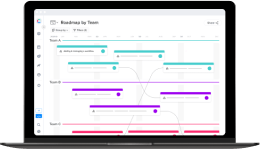You’re living in a great time to be a product professional, and the fact that the page you’re reading even exists — a guide to purpose-built product management software — is just one example of why.
If you were a Product Manager in the not-too-distant past, you’d have limited options for software applications to help you perform your everyday strategic work. You’d probably be cramming your product backlog into a spreadsheet or word processing file, creating makeshift formulas to figure out how to prioritize the items to work on next, and drafting your roadmap by manually drawing and resizing text boxes on presentation slides.
But here you are, searching through the ever-growing field of software platforms built just for product professionals like you. That’s the good news. The bad news is that many of these solutions — Aha! included — are likely to leave you and your team underwhelmed and disappointed.
In fact, there are enough product management software solutions out there today that you don’t need to choose the first one you come across, or the one whose name you’ve heard the most. You can find platforms on the market with widely varying functionality — from a one-feature solution (for example, a tool that focuses just on roadmapping) to an end-to-end product management software platform. And even among those full-featured platforms, you’ll find some solutions that you love and, to put it politely, others that you won’t.
We created this guide to help you figure out who’s who among the software platforms competing for your product team’s attention — by reviewing their capabilities, areas of focus, strengths, and weaknesses. As we’ll demonstrate below, the more you learn about the Aha! platform, the more likely you and your team are to place it into the “won’t love” category.
First, though, let’s briefly review some of the key traits you should be expecting from your product management software platform and the company behind it.
What Is a Product Management Software Solution?
Until recently, product management software wasn’t really a thing. Product Managers had little choice but to use whatever tools they could find — which typically meant defaulting to Microsoft Office solutions like Excel, PowerPoint, and Word.
But now that the software industry — and the business world generally — has finally begun to understand the tremendous strategic value product professionals bring to an organization and its products, you have real options out there for purpose-built product management software. In fact, the large and growing number of solutions built for Product Managers means you can be picky and settle for nothing less than a solution that will:
- Centralize all of your product content in a user-friendly digital platform
- Provide built-in best-practice elements such as prioritization frameworks and templates
- Allow you to display content using whichever views and data parameters suit your needs
- Sort and resort your data with just a few clicks — using familiar, Excel-like functionality
- Connect your items to specific business objectives and success metrics
- Sync your product data with your dev team’s work in Jira or other tools
- Offer world-class customer and sales support — including help with customization
What to Check When Comparing Aha! Alternatives
Let’s start with a note about the final point above: working with a support team that takes the time to learn your organization’s needs and workflows and helps make your implementation as frictionless and painless as possible.
As you’ll find in review after review on the major software-rating sites, this is one of the key areas where Aha! disappoints its users. The solution itself is quite complicated and clunky (another complaint users cite often in their reviews), and Aha!’s vendor support and ease of customization often receive among the lowest scores within the company’s reviews from customers.
That’s not a good combination, and it helps explain a recurring theme in customers’ published reviews, stating that they 1) had trouble configuring the Aha! platform for their needs and 2) also had trouble reaching Aha!’s support team.
And this isn’t the only challenge you’ll find as you thoroughly research the Aha! solution. We’ll discuss another key shortcoming now.
Aha!’s main drawback
Many of the solutions claiming to be end-to-end product management software are in fact far less than that. We’ll introduce you to a few such solutions, such as Productboard, in the Aha! comparisons section below.
But Aha! has a different challenge. While the company initially built its application as a laser-focused roadmapping app, it has continuously added features in an effort to capture more teams across its customer companies — as opposed to staying focused specifically on adding value for product management departments.
In fact, in an attempt to become everything to everyone, Aha! has recently rebranded its solution as a “software development” platform. And the solution has the massive, bloated, and convoluted interface to match that promise — throwing everything into its platform for product management, development, project management, marketing, IT, business operations… you name it.
But you’re looking for a software solution built just for the needs of product management teams, right? With Aha!, you’ll probably find most of the tools you need, but it’ll cost you in more ways than one…
- The interface is cluttered and confusing, because it includes features for everyone.
- You’ll have to customize just about every project you begin and every new piece of functionality you deploy.
- You’ll be overpaying for Aha!’s massive feature set, even though you need it only for product management work — and that’s why the product is extremely expensive relative to its competitors.
Now let’s review how Aha! compares to the other providers of product management software.
Aha! vs. craft.io
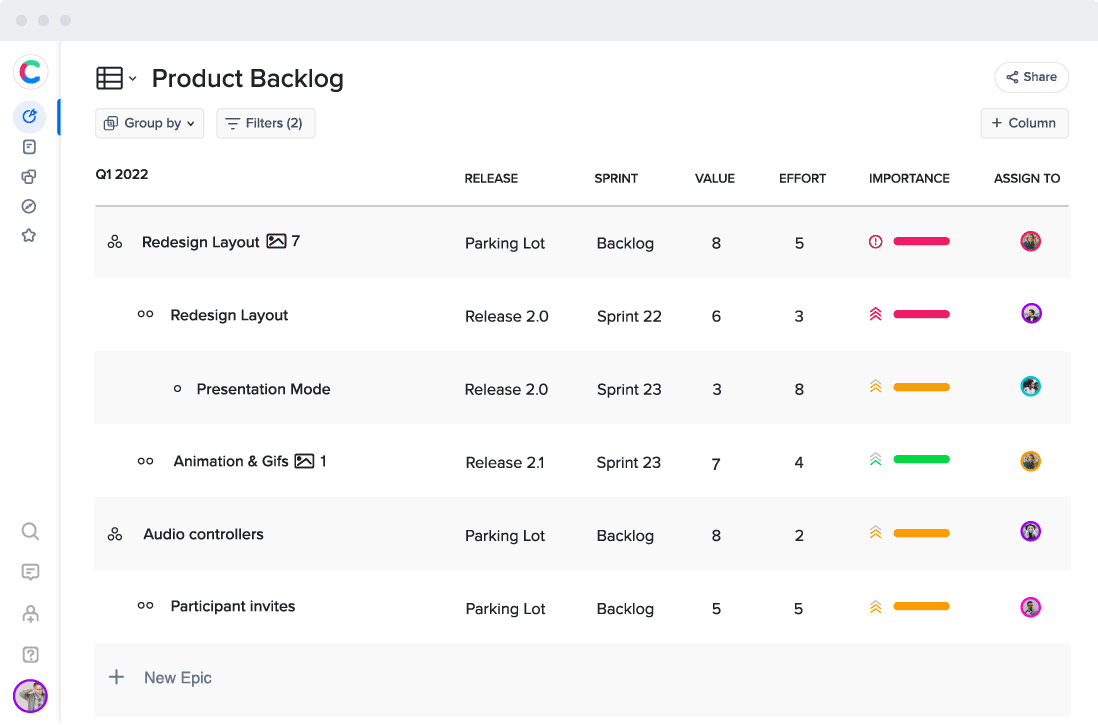
What is craft.io?
Where Aha! has decided to build an everything-for-everyone app, craft.io instead focuses strictly on offering a truly comprehensive product management platform.
You can easily connect your craft.io platform with other apps to sync the work of your other teams (Jira and Azure DevOps for development work, for example). But craft.io itself focuses on creating an end-to-end strategic hub for your product team’s work.
craft.io pros:
- Complete product management environment in a single pane of glass — centralizing roadmapping, prioritization, capacity planning, dependency management, etc.
- An intuitive data model: 4-item data hierarchy that aligns seamlessly with Jira.
- Ease of use: craft.io’s UX/UI is super clear and friendly.
- The Guru layer: A collection of best-practice templates to help Product Managers effortlessly apply proven best practices such as roadmap templates, prioritization frameworks, and strategic models, with just a click of a button.
- Excel-like UX: Excel-like table functionality to view, sort, and edit items properties directly in tables, create prioritization and apply capacity planning.
- Infinite flexibility for viewing and presentation — from Kanban to swimlane to timeline in a few clicks.
- Seamless integrations with dev tools (Jira, Azure DevOps, GitHub, GitLab, and more), visual collaboration apps (Miro, Axure), and design software (Figma, InVision, and Adobe XD).
- World-class sales and customer support teams that walk customers through an effective and efficient onboarding process, help with customization, and are highly responsive to customers’ ongoing needs.
craft.io cons:
- Not much to say here…
craft.io is what many of the solutions you’ll find in this guide claim to be but aren’t: a genuine end-to-end product management platform built specifically for product teams.
Aha! vs. Productboard
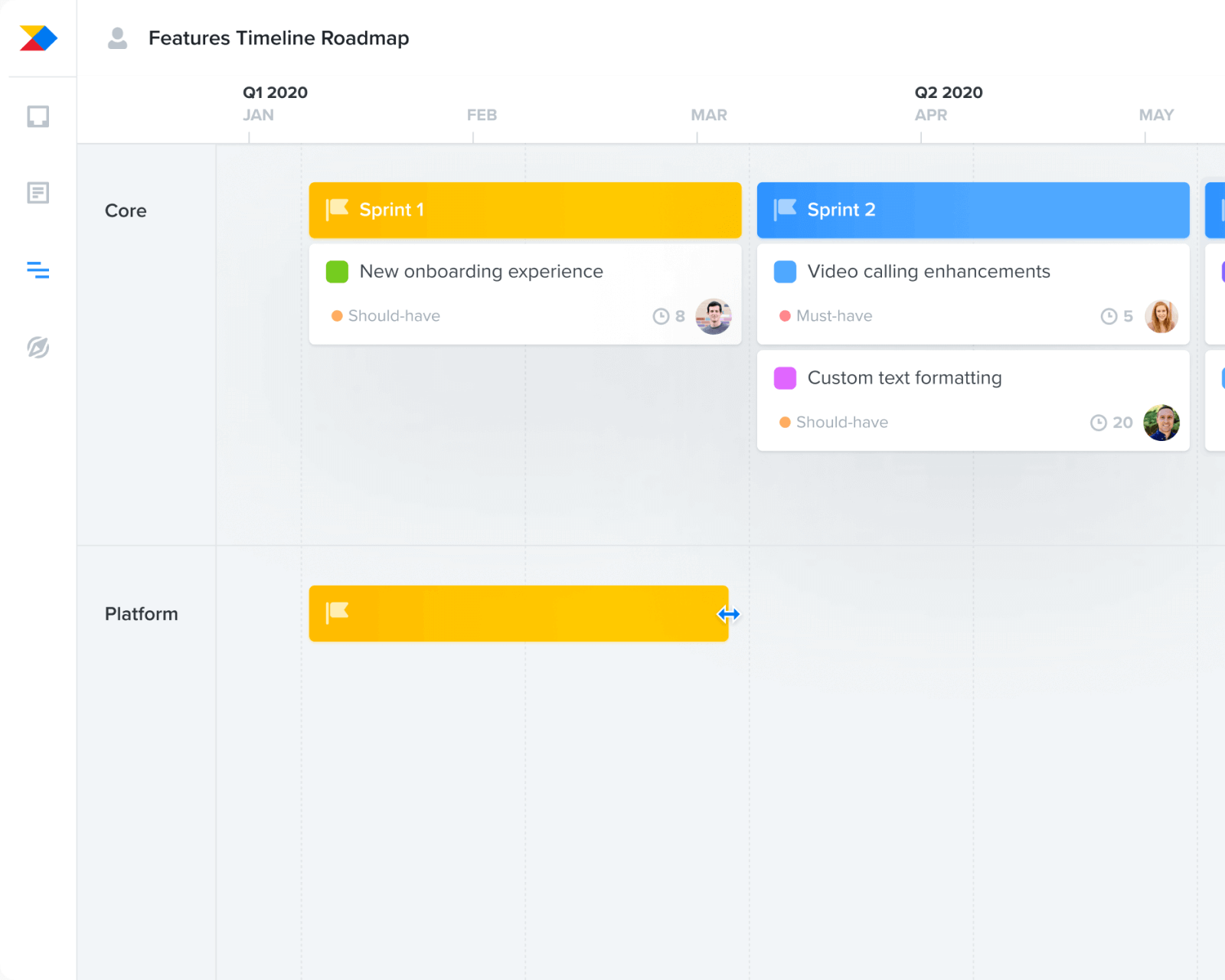
What is Productboard?
Productboard calls itself a “customer-centric product management system.” And while that might sound like the company is aiming to compete with craft.io’s reputation for world-class customer service, Productboard is referring to something else.
Productboard is actually a feedback-focused application. Much of the app’s value proposition focuses on helping product teams collect and analyze user feedback. In fact, you’ll find that the other areas of the platform — roadmaps, prioritization — offer very basic functionality that allows Productboard to claim it has built a thorough software solution for product teams.
Productboard pros:
- Excellent user feedback functionality.
- Clean and user-friendly UI for its feedback-analysis engine.
- A couple of additional product management tools, including basic roadmapping and idea capture tools.
Productboard cons:
- Requires a lot of manual work (to build templates, customize prioritization formulas, etc.) to adapt to a product team’s needs and preferences.
- Offers only a few prioritization frameworks.
- Does not offer the familiar filter and sort capabilities of Excel.
- Does not offer capacity planning for resource allocation.
- Is an extremely opinionated tool in terms of telling users how to do their product work.
Aha! vs. airfocus
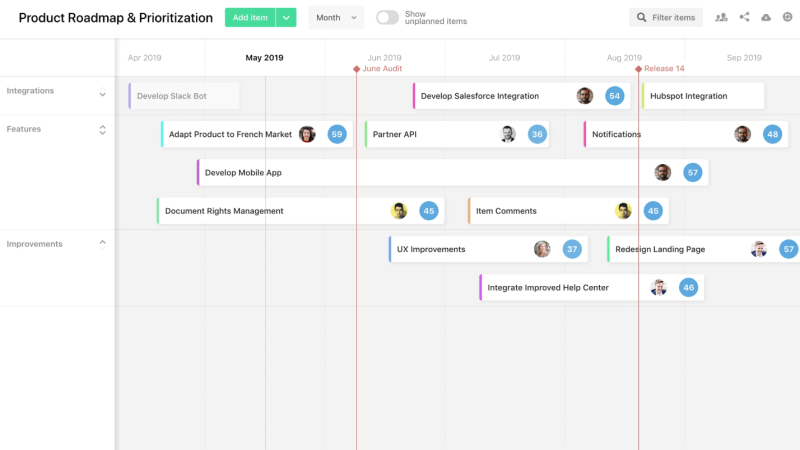
What is airfocus?
airfocus positions itself in some of its marketing materials as product management software, but in reality it’s more of a project management solution. If you review the application’s features and UI, you’ll find it focuses heavily on helping project teams assign, monitor, and track tasks and manage projects.
Yes, airfocus does include some very basic functionality for product teams. But the more you research the solution, the clearer it becomes that this is a project management or task management platform whose company hopes to capture an adjacent market by claiming it is also a platform for Product Managers.
airfocus pros:
- Offers basic roadmapping capability.
- Includes a few built-in prioritization frameworks.
- Integrates with popular dev tools such as Jira and Azure DevOps.
airfocus cons:
- Doesn’t offer Excel-like functionality (to easily sort and order data sets by any column according to any criteria).
- Is quite expensive and not cost-effective for smaller teams.
- Lacks customization for roadmap views and presentation (a must-have for product teams that need to share strategic roadmaps with different stakeholders).
- Offers very limited prioritization capabilities.
- Does not offer built-in capacity planning.
- Lacks the ability to set and manage personas, establish OKRs, and connect these strategic elements to products or specific functionality.
Aha! vs. ProductPlan
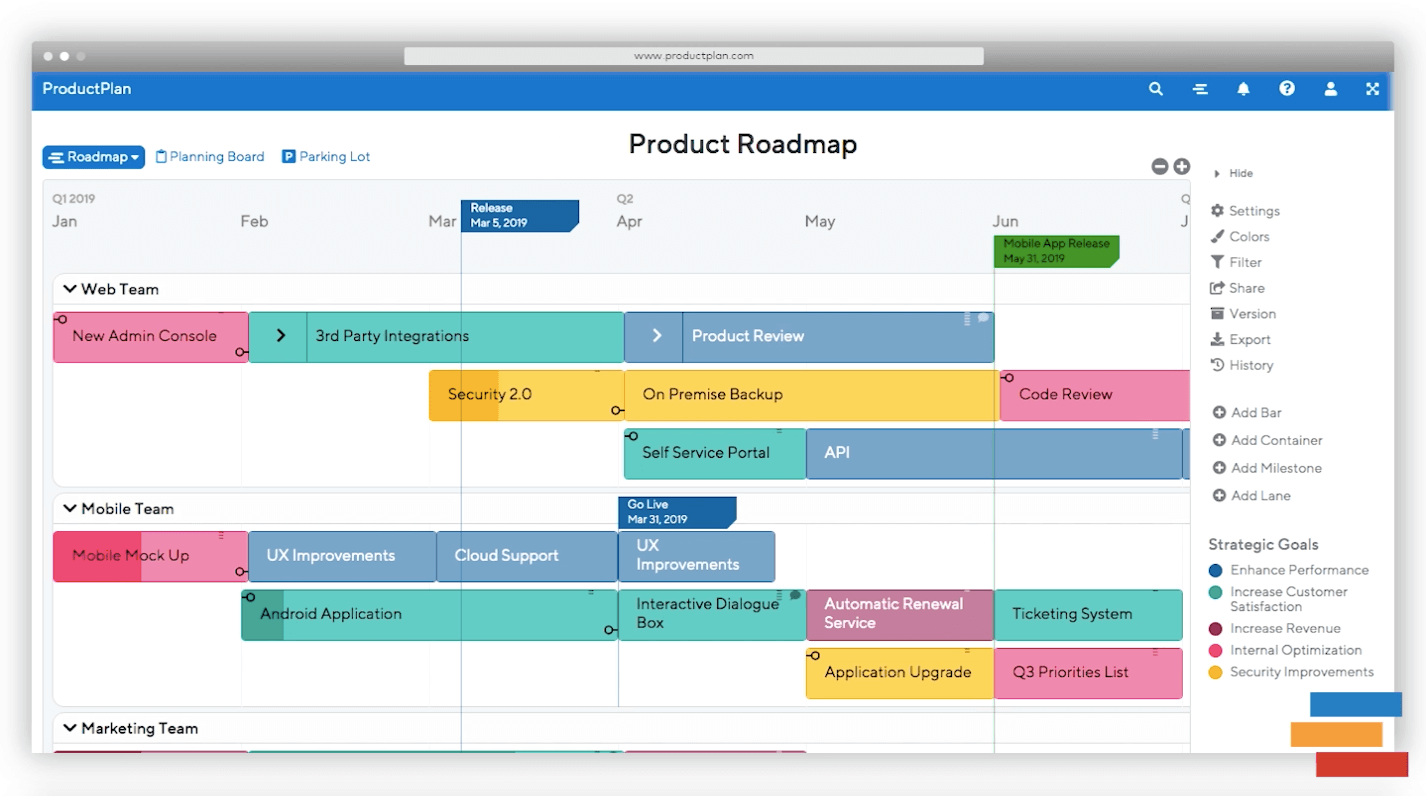
What is ProductPlan?
Like Aha! itself, the ProductPlan app began its lifecycle as a narrowly focused roadmapping solution. And today, ProductPlan’s roadmap functionality is intuitive and highly useful — and a much better user experience than you’ll find trying to build roadmaps in Aha!
But beyond roadmapping and some very basic prioritization capabilities — which require a lot of manual work — ProductPlan doesn’t offer much else in terms of product management capabilities.
ProductPlan pros:
- Offers a strong roadmapping experience, with templates for several types of roadmaps.
- Includes very little prioritization capability — you’ll have to manually input your own formulas.
- Integrates with popular dev tools such as Jira and Azure DevOps.
ProductPlan cons:
- Includes only a couple of views for your product data: roadmap and backlog
- Includes very little prioritization capability — you’ll have to manually input your own formulas.
- Lacks capacity planning capabilities.
- Doesn’t offer Excel-like functionality (to easily sort and order data sets by any column according to any criteria).
Aha! vs. Airtable
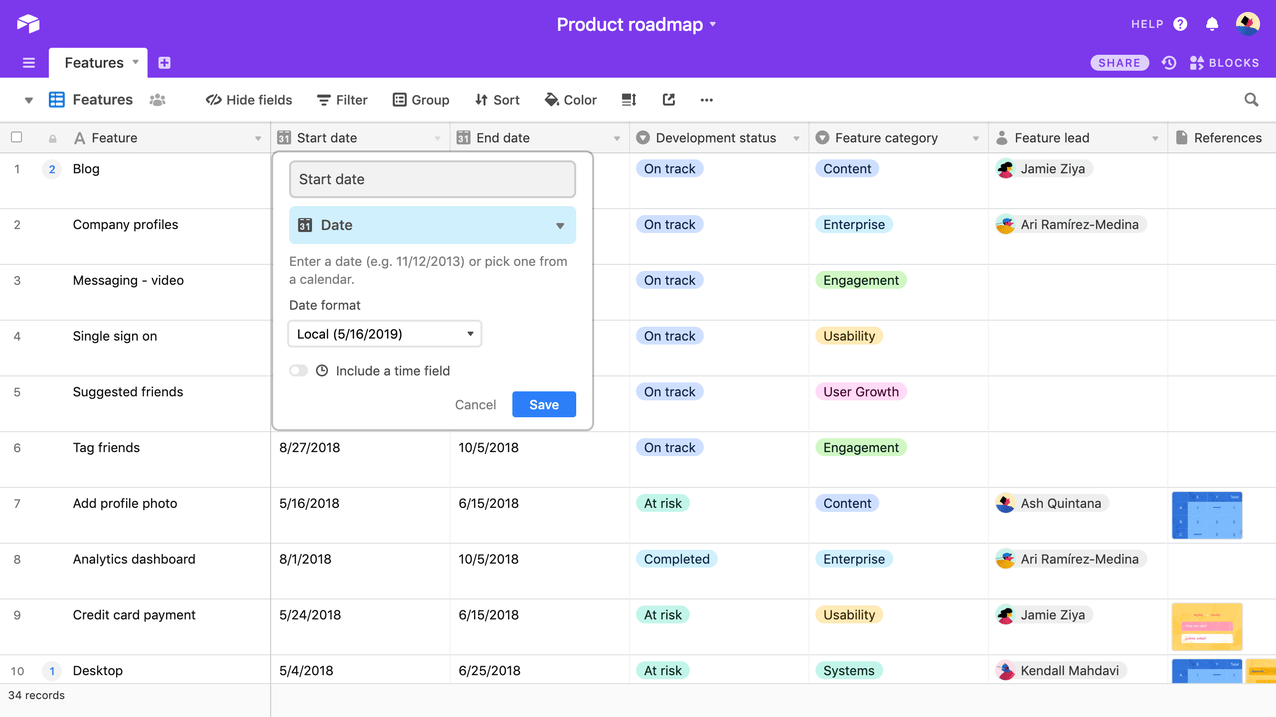
What is Airtable?
You can think of Airtable as a cross between airfocus (in that it’s geared toward project management as opposed to product management) and Aha! (in that it’s an everything app trying to serve teams all across its customers’ companies).
Indeed, on Airtable’s website, the company describes its app with the red-flag headline, “Everyone’s app platform.” And elsewhere on the site, you’ll learn that the solution is designed not just for product teams but also for marketing, operations, HR, sales, accounting, and other departments.
Airtable pros:
- Offers customer feedback collection.
- Lets users build a standard product roadmap (although with limited options for visual presentation).
- Allows users to connect roadmap items to OKRs.
Airtable cons:
- Not a complete product management platform.
- Does not include prioritization frameworks you can apply with a single click. In fact, the app asks users to “customize your own” formulas.)
- Lacks capacity planning and resource-allocation capabilities.
Aha! vs. Jira
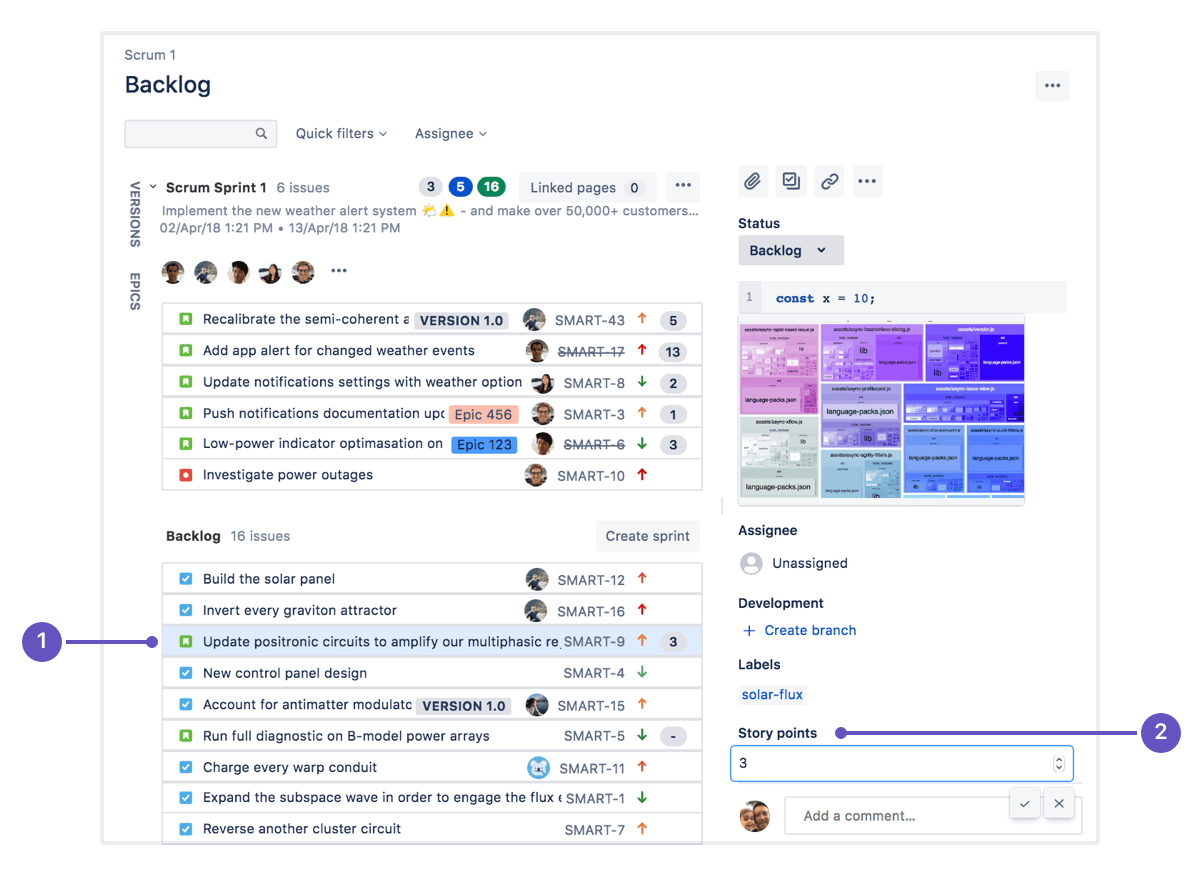
What is Jira?
Jira is another example of a software platform built for something other than product management but whose company has tacked on a few features in recent years to earn a piece of the ever-growing market for product management software.
Jira describes itself as “The #1 software development tool for agile teams.” And by agile teams, of course, the company means agile development teams. Jira is and has always been a valuable platform for coordinating and tracking the technical work of engineers and software coders.
And although Jira very recently launched an app for product teams (still in beta, in fact), its core functionality was never designed specifically for the unique needs and workflows of product management teams. And that shows in its capabilities.
Jira pros:
- An invaluable integration into purpose-built product management software.
- Can help Product Managers directly monitor their dev teams’ progress on tasks.
- Includes product roadmapping capability.
Jira cons:
- Not designed to be product management software.
- Does not offer strategic-level planning or prioritization functionality.
Aha! vs. Asana
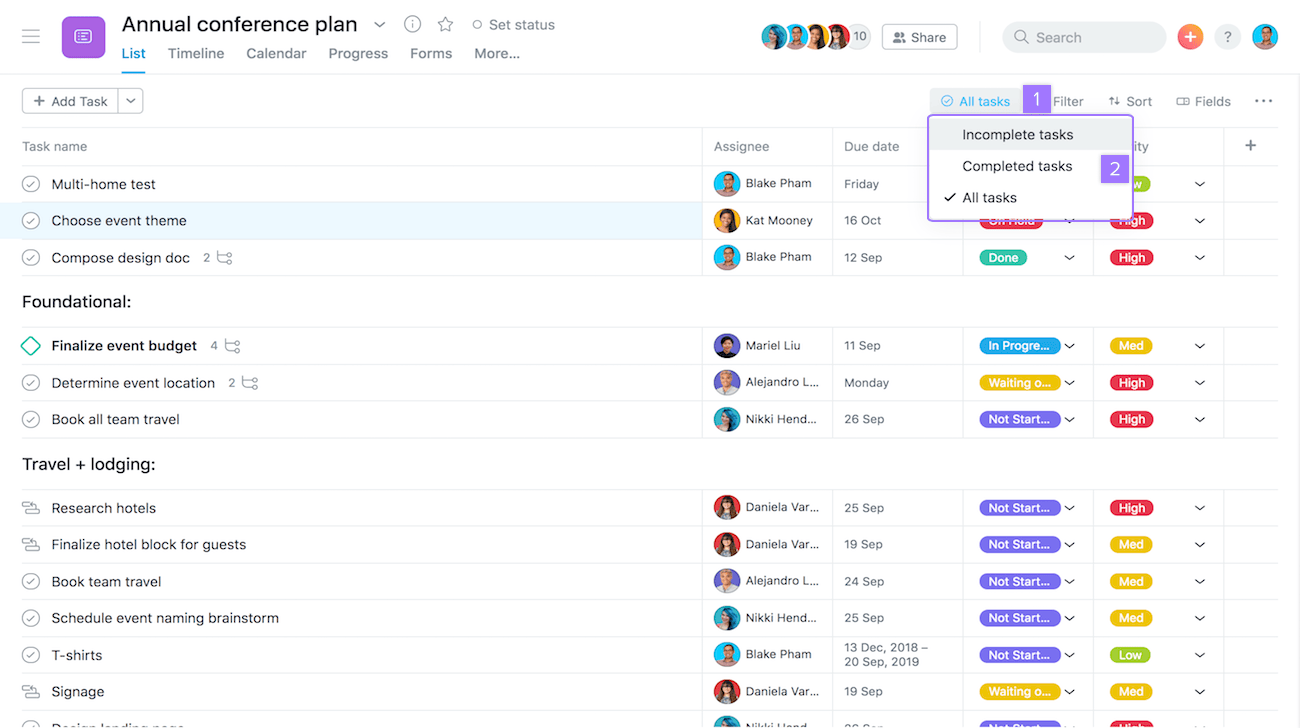
What is Asana?
Similar to airfocus and Jira, Asana’s real value proposition is more efficient project management. The solution’s homepage, for example, promises to help you: “Track, manage, and connect your projects across any team.”
That’s a valuable solution. But as we’re seeing with app after app in this guide, Asana was not conceived or built specifically to meet the unique strategic needs of Product Managers and their teams.
Asana pros:
- Excellent collaboration platform.
- Helps teams across a company assign and track tasks as well as manage long-term, complex initiatives.
Asana cons:
- Not a product management solution.
- Doesn’t include essential product management elements such as built-in prioritization frameworks.
Aha! vs. ProdPad
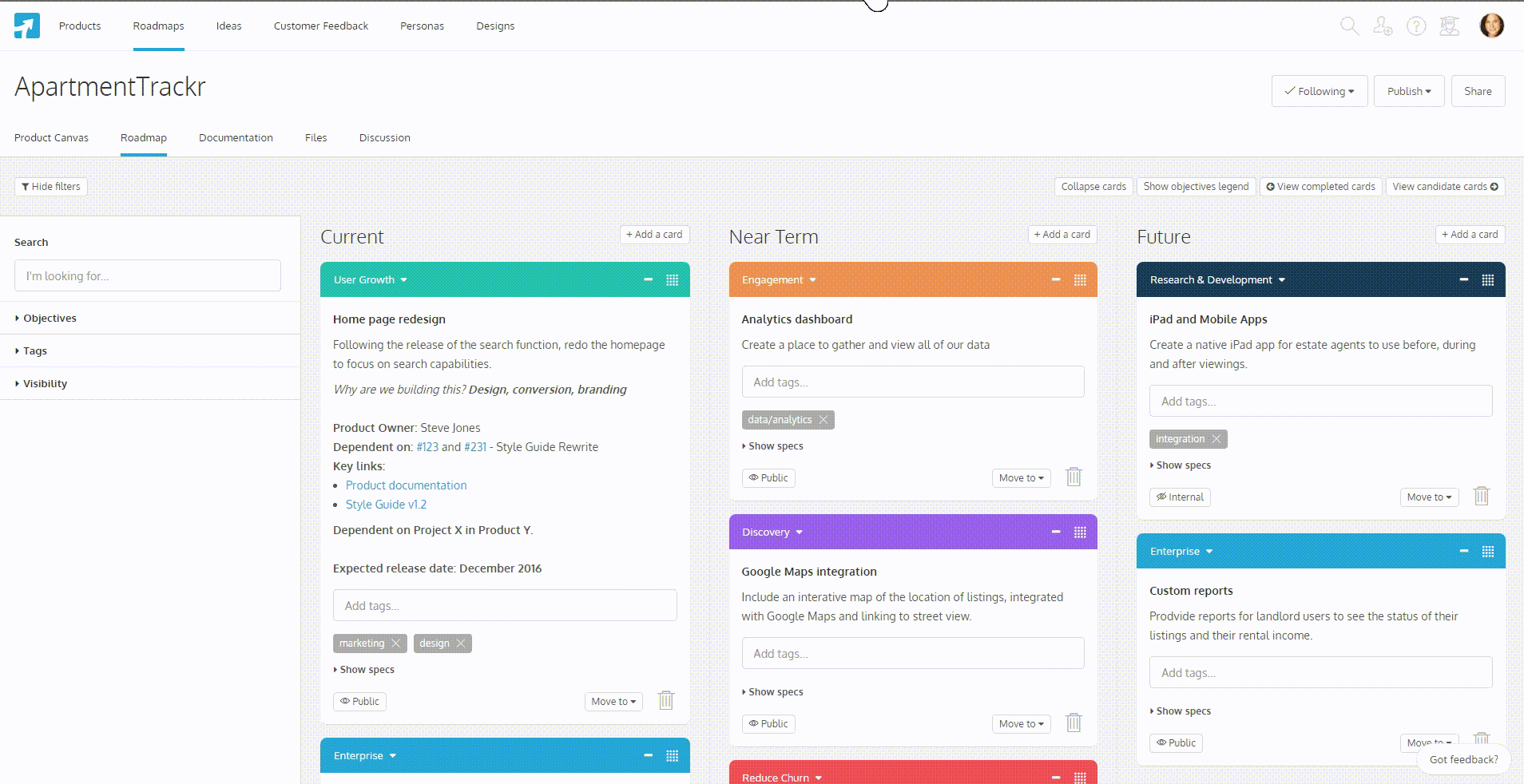
What is ProdPad?
One advantage ProdPad has over several of the tools we’ve just reviewed is that unlike Asana, airfocus, and Jira, this platform was designed with Product Managers in mind.
But if you’re looking for a comprehensive product management solution, you’ll find that ProdPad still falls short of your needs. This tool, like Productboard, is more of a point solution than an all-in-one platform. It excels at a few areas of product management functionality but offers little or no support on many other key workflows you and your team will need.
ProdPad pros:
- Includes user feedback analysis capabilities.
- Offers several roadmapping views.
- Lets teams connect roadmap items to OKRs.
ProdPad cons:
- Lacks built-in prioritization frameworks and requires a lot of manual inputs to score competing backlog items.
- No capacity planning.
- No Excel-like functionality (to easily sort and order data sets by any column according to any criteria).
- No product portfolio management capabilities.
- Offers only a very limited integration with Jira.
Aha! vs. Roadmunk
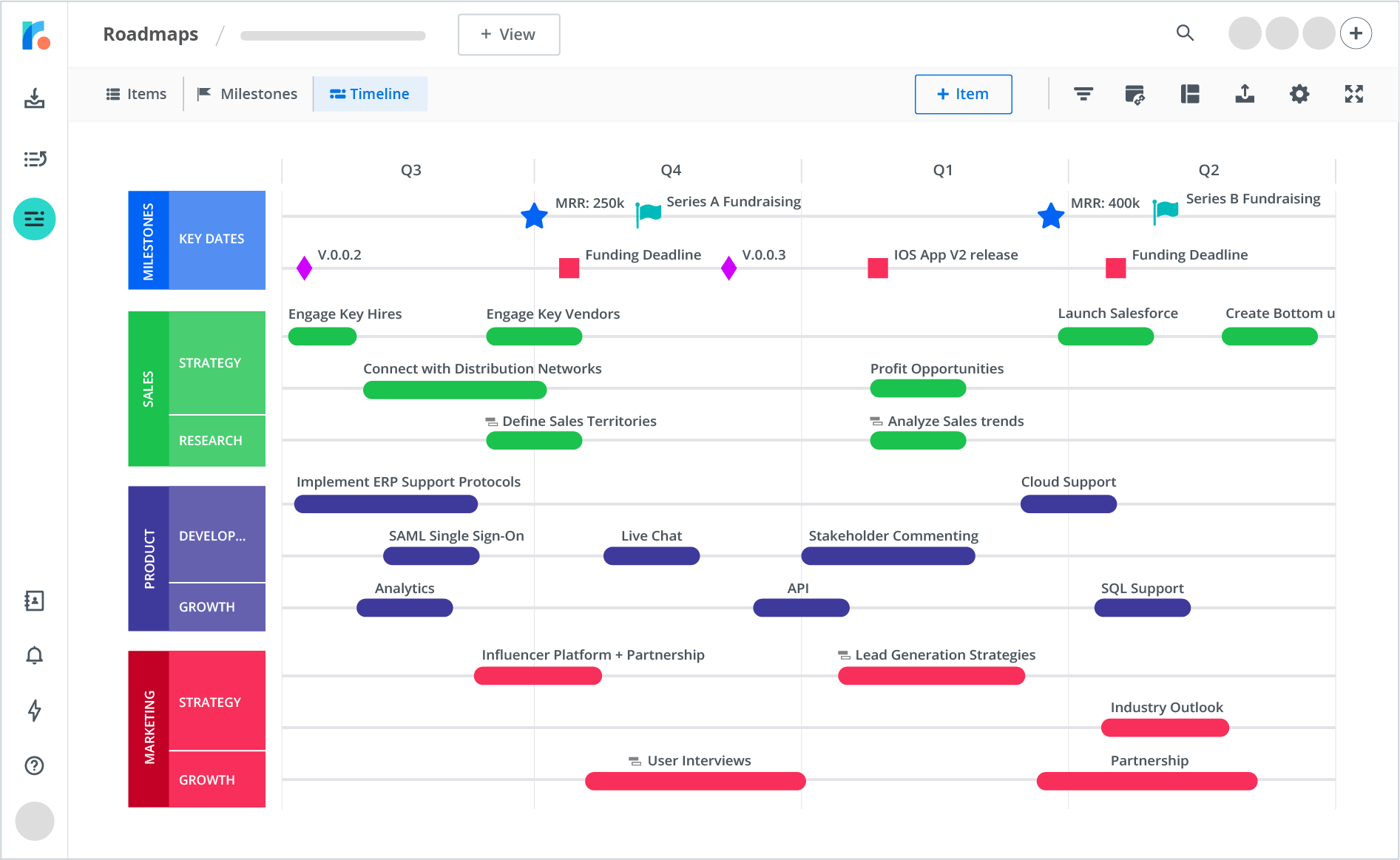
What is Roadmunk?
Like ProdPad, the Roadmunk platform offers good news and bad news. The good news: Roadmunk was developed specifically for product professionals. The bad news: As its name suggests, the app focuses on just one sliver of a product team’s needs — roadmapping — and offers little else in terms of functionality.
Capacity planning? No. Best-practice templates to help you quickly draft personas, stories, and specs? Afraid not. The flexibility to display your product content using a wide range of views and levels of detail? Sorry. Roadmunk does roadmapping, and that’s about it.
Roadmunk pros:
- Provides a highly effective roadmapping experience.
- Offers two prioritization templates for scoring backlog items.
Roadmunk cons:
- Not a complete product management solution (by far).
- No portfolio-level product management.
- No capacity planning.
- No Excel-like functionality (to easily sort and order data sets by any column according to any criteria).
- No built-in templates for persona development, user story or feature creation, etc.
Aha! vs. Dragonboat
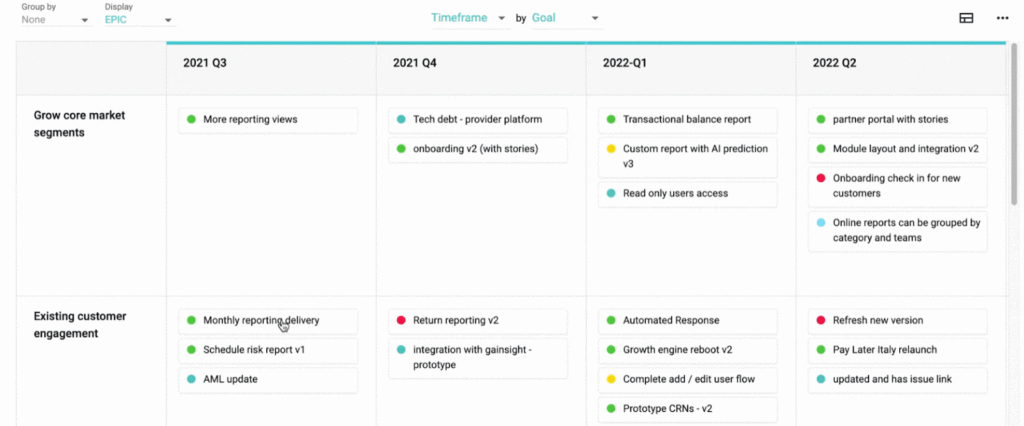
What is Dragonboat?
Among the software platforms we’re reviewing in this guide, Dragonboat is the only one that positions itself strictly as a tool for product leaders and executives. That’s why Dragonboat is also the only solution we’ve found that describes itself as a “product portfolio platform.”
Most of the tools we’re discussing here don’t even offer the product portfolio management functionality (although craft.io does). So if you’re in a product leadership role, you might want to learn more about Dragonboat. But if you’re looking for a comprehensive digital environment for your product management team’s work — a single source of product truth for your company — you’ll find Dragonboat severely lacking.
Dragonboat pros:
- Enables management at the product portfolio level. (Ideal for product leaders and product portfolio managers.)
- Centralizes and helps prioritize feature requests.
- Integrates with key apps such as Jira, Azure DevOps, and Slack.
Dragonboat cons:
- Not an end-to-end product management platform.
- Offers only a couple of built-in prioritization frameworks.
- No Excel-like functionality (to easily sort and order data sets by any column according to any criteria).
Aha! vs. Canny
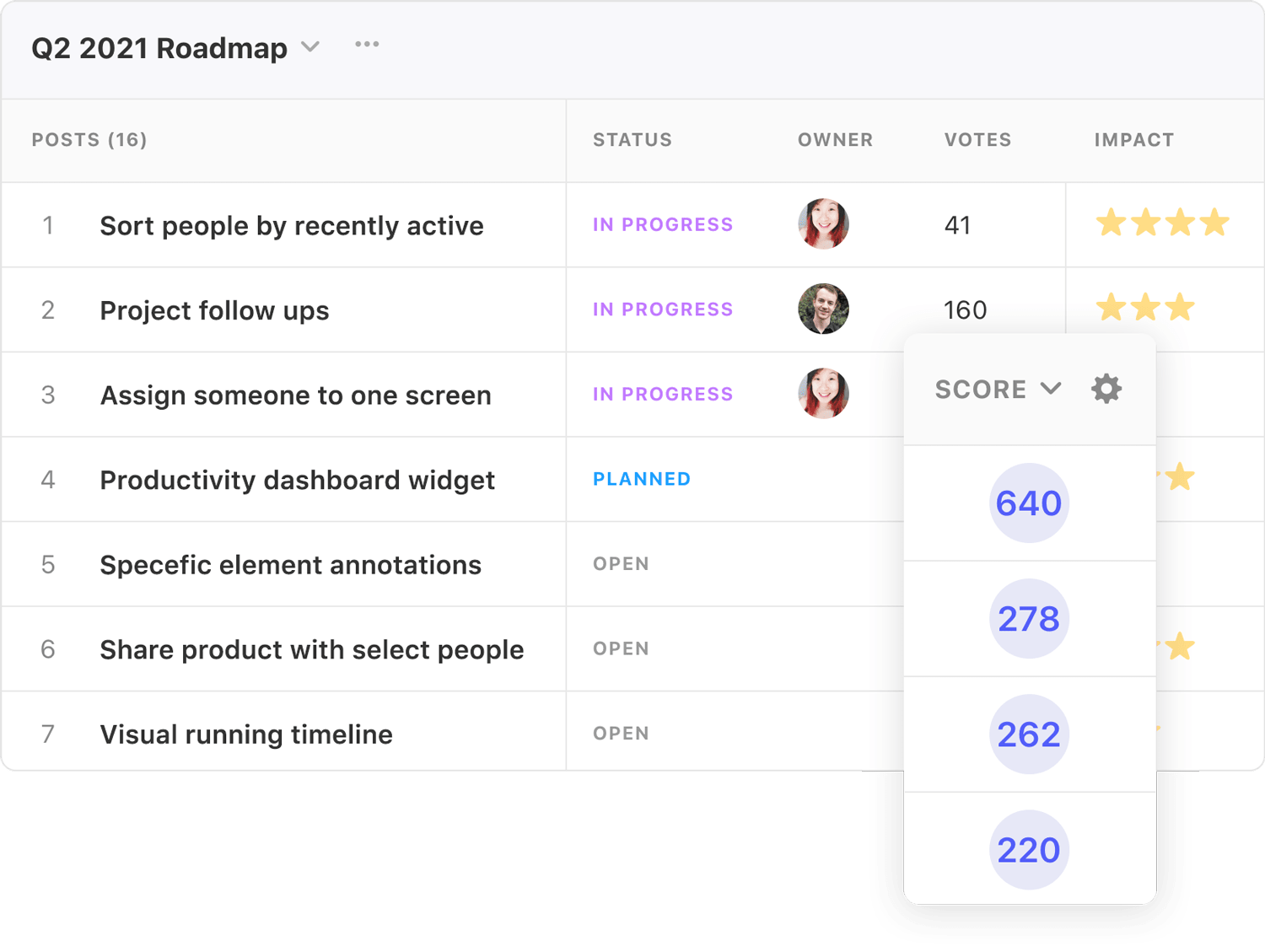
What is Canny?
Here’s the main value proposition Canny presents on its homepage: “Capture, organize, and analyze product feedback in one place to inform your product decisions.”
Canny and Productboard are both software applications whose core capability is helping users collect and make sense of customer feedback. In other words, Canny, like Productboard, is a point solution for product teams — not a comprehensive product management platform.
Canny pros:
- Powerful feedback collection and analysis tools.
- Allows teams to prioritize and clearly label work (“New,” “Improve,” “Fix,” etc.) based on feedback received.
- Helps to align teams across the company around a shared understanding of what users are saying about the products.
Canny cons:
- Not a complete product management platform.
- Offers very limited roadmapping functionality and flexibility.
- Does not include built-in prioritization frameworks, capacity planning, or other key product management capabilities.
Aha! vs. Monday.com
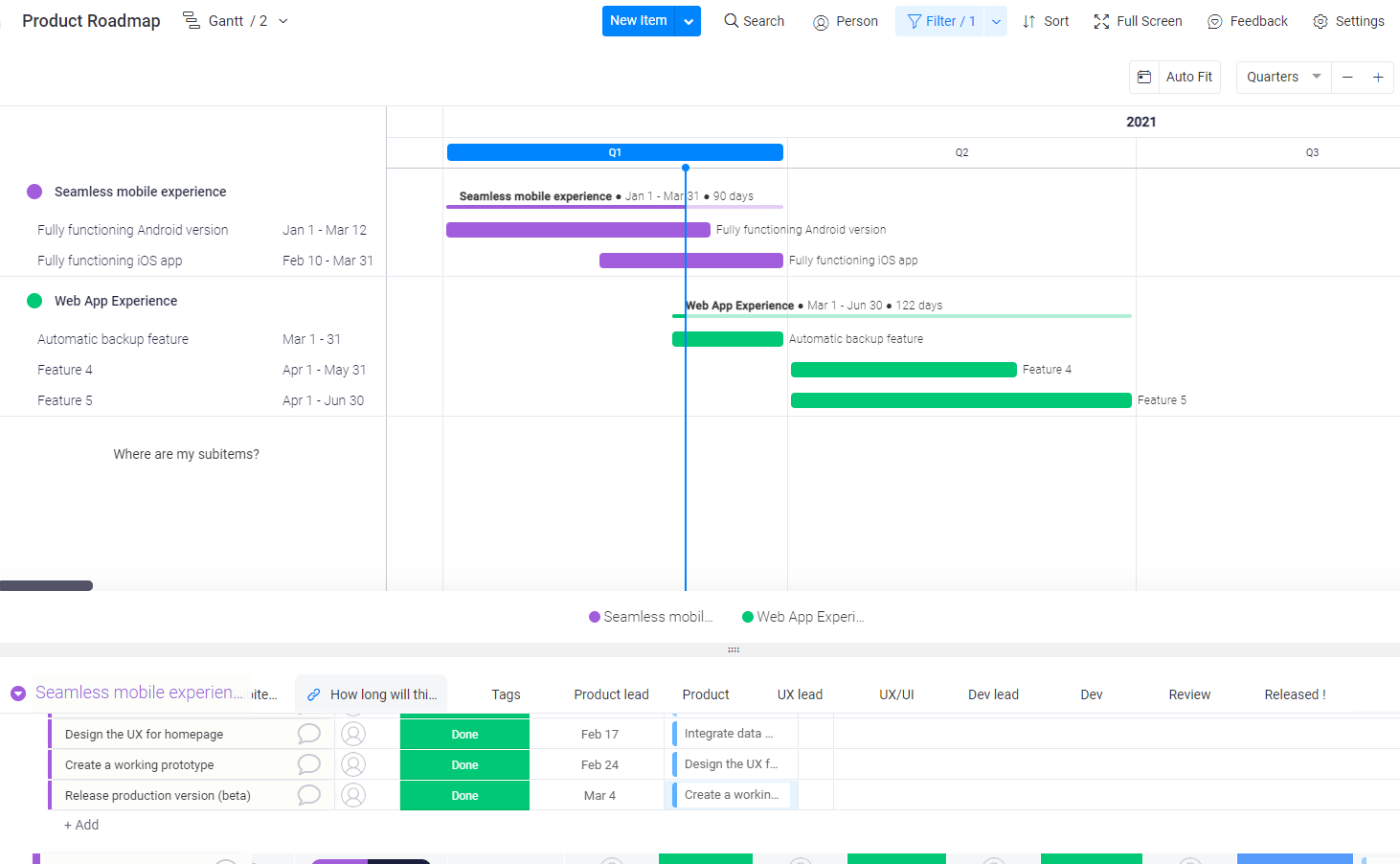
What is Monday.com?
It’s a mystery to us why Monday.com finds its way onto so many lists of product management software solutions. If you read the company’s own website and marketing materials, you’ll quickly realize that this app is far from a purpose-built solution for product teams.
In fact, Monday.com describes itself as a “Work OS,” and its website promises to help businesses improve workflows for “Marketing, CRM, HR, software development, construction, video production, and so much more.”
Monday.com pros:
- Great tool for creating workflows and cross-team collaboration.
- Ideal platform for project and task management.
Monday.com cons:
- Not a product management solution.
- Very few Product Manager-specific capabilities beyond a very basic roadmap view.
Aha! vs. Clickup
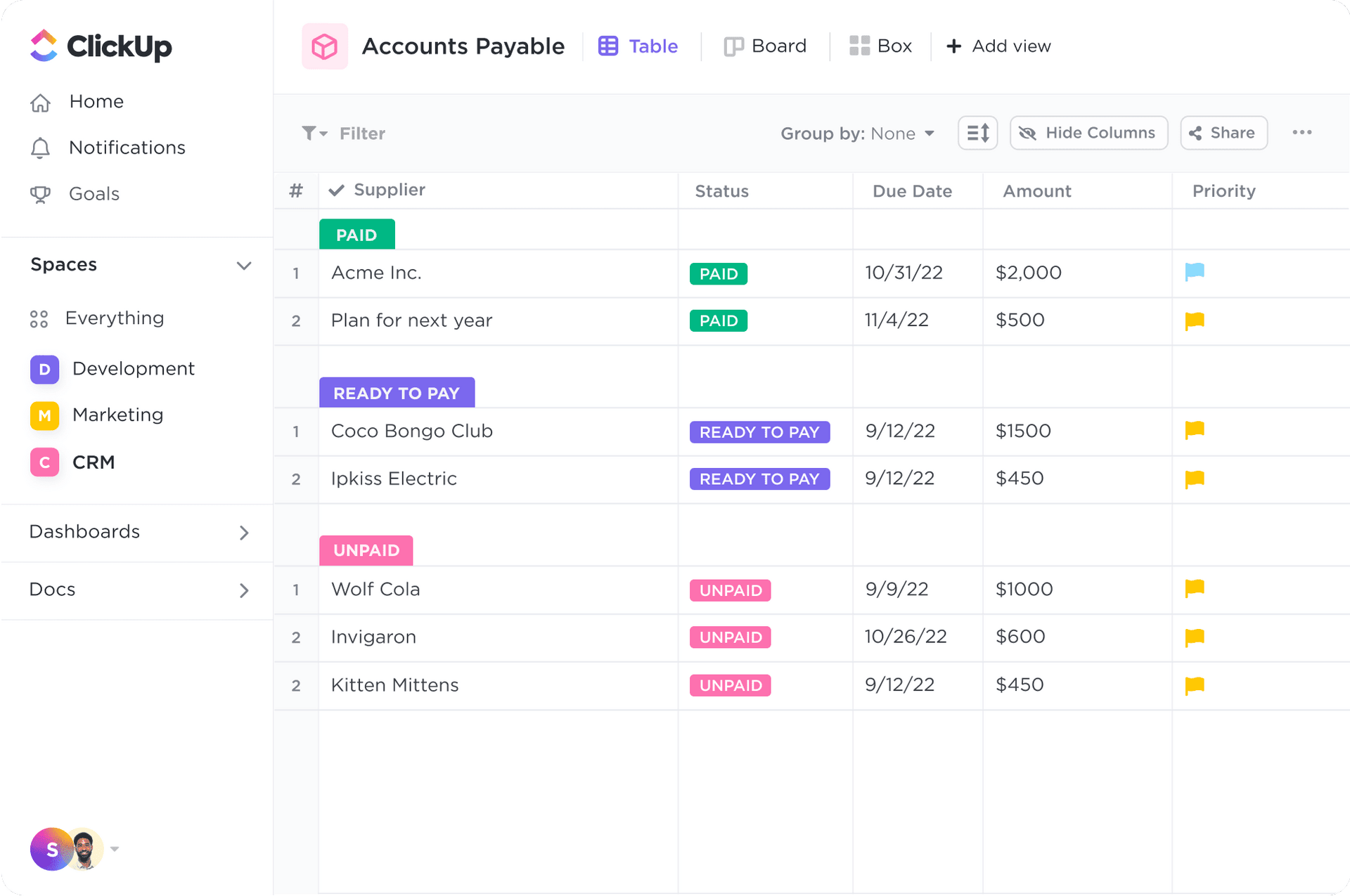
What is ClickUp?
Just as Airtable claims to be “Everyone’s app platform,” ClickUp makes a similar claim, calling itself the “One app to replace them all.” A little more investigation on the company’s website reveals that the functionality ClickUp offers includes team chat, task management, whiteboards, goals, docs, dashboards, etc.
Again, this could be an invaluable software solution for your company. But it fails almost entirely to address the specific needs and workflows of product management.
ClickUp pros:
- Brilliant team collaboration solution.
- Versatile digital environment that centralizes workflows and communications for teams across the company.
ClickUp cons:
- Not a product management solution
- Very little product management functionality beyond basic roadmap creation.
Aha! vs. Trello
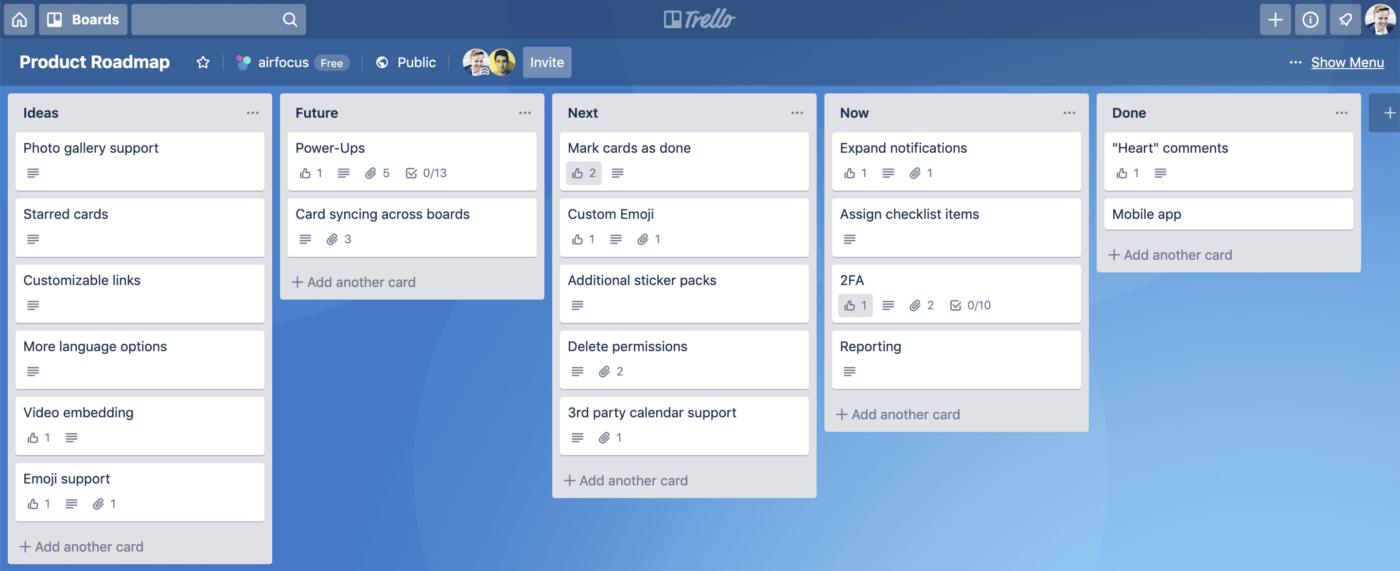
What is Trello?
“Trello is a collaboration tool that organizes your projects into boards.” That’s the headline on the company’s website. In other words, like so many of the apps claiming to be product management solutions, Trello is actually a project management tool.
In fact, the four primary use cases listed on Trello’s main product page are: project management, meetings, onboarding, and task management.
Trello pros:
- Outstanding app for cross-team collaboration.
- Simplifies project management for complex company initiatives.
- Intuitive interface makes it easy to implement and use.
Trello cons:
- Not designed for product management.
- Offers only very basic roadmapping functionality with little flexibility in views or presentation modes.
- Does not include built-in prioritization frameworks, feedback collection, capacity planning, or other key strategic product management workflows.
Conclusion
If you’re looking strictly for the greatest number of features, you might determine that Aha! is your best bet for product management software. But just as so many tools in this space underdeliver — offering only one or two of the many important capabilities product teams need — Aha! overdelivers in the sense of cramming a massive number of features into a cluttered and non-intuitive interface.
Worse, the company’s long-standing reputation for difficult onboarding and poor customer support mean that your product team will likely need to devote a lot of time and effort to get yourselves up and running on the platform and using it efficiently and successfully.
As we hope this guide has made clear, building a product management software platform isn’t easy. It takes a team devoted specifically to that goal from the beginning — and staying true to that value proposition throughout its product lifecycle.
In other words, you’ll want to avoid any solution whose core functionality was built for one team (say, project managers) but later altered slightly to capture the Product Manager persona. And just as important, you’ll want to steer clear of overdelivering product management apps that — like Aha! — were designed for one purpose, such as roadmapping, but have since added feature after feature to their cluttered interface in the hopes of capturing every team across the company other than product management.
If you’d like more help finding that perfect product management solution, an end-to-end digital hub for your product team’s important strategic work, read our Product Management Platform Buyer’s Guide.
In the meantime… try craft.io for free

